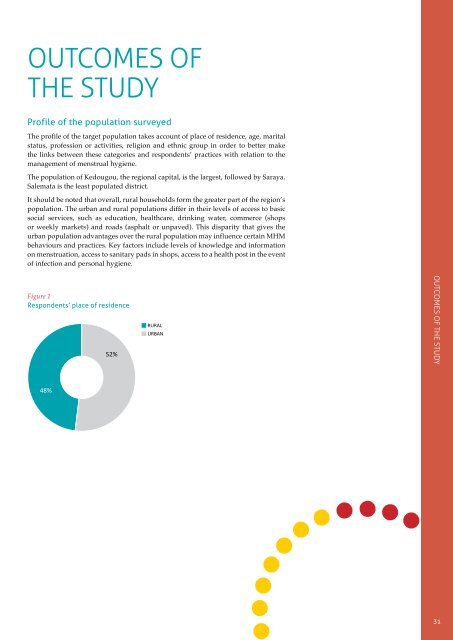1wE4FuZ
1wE4FuZ
1wE4FuZ
Create successful ePaper yourself
Turn your PDF publications into a flip-book with our unique Google optimized e-Paper software.
Outcomes ofthe studyProfile of the population surveyedThe profile of the target population takes account of place of residence, age, maritalstatus, profession or activities, religion and ethnic group in order to better makethe links between these categories and respondents’ practices with relation to themanagement of menstrual hygiene.The population of Kedougou, the regional capital, is the largest, followed by Saraya.Salemata is the least populated district.It should be noted that overall, rural households form the greater part of the region’spopulation. The urban and rural populations differ in their levels of access to basicsocial services, such as education, healthcare, drinking water, commerce (shopsor weekly markets) and roads (asphalt or unpaved). This disparity that gives theurban population advantages over the rural population may influence certain MHMbehaviours and practices. Key factors include levels of knowledge and informationon menstruation, access to sanitary pads in shops, access to a health post in the eventof infection and personal hygiene.Figure 1Respondents’ place of residence52%Outcomes of the study48%31



